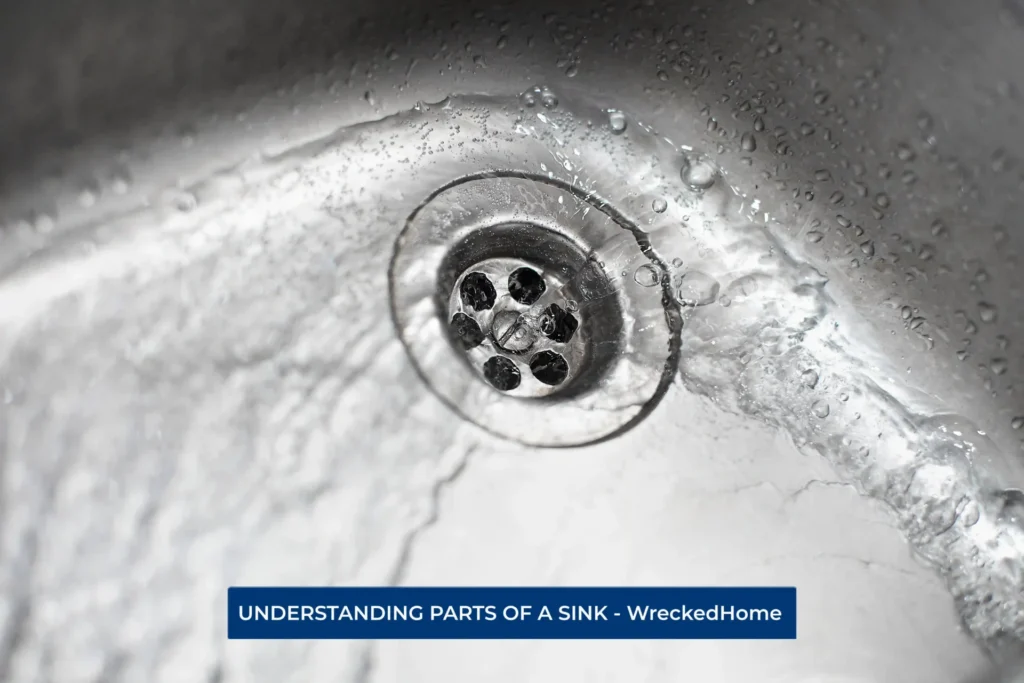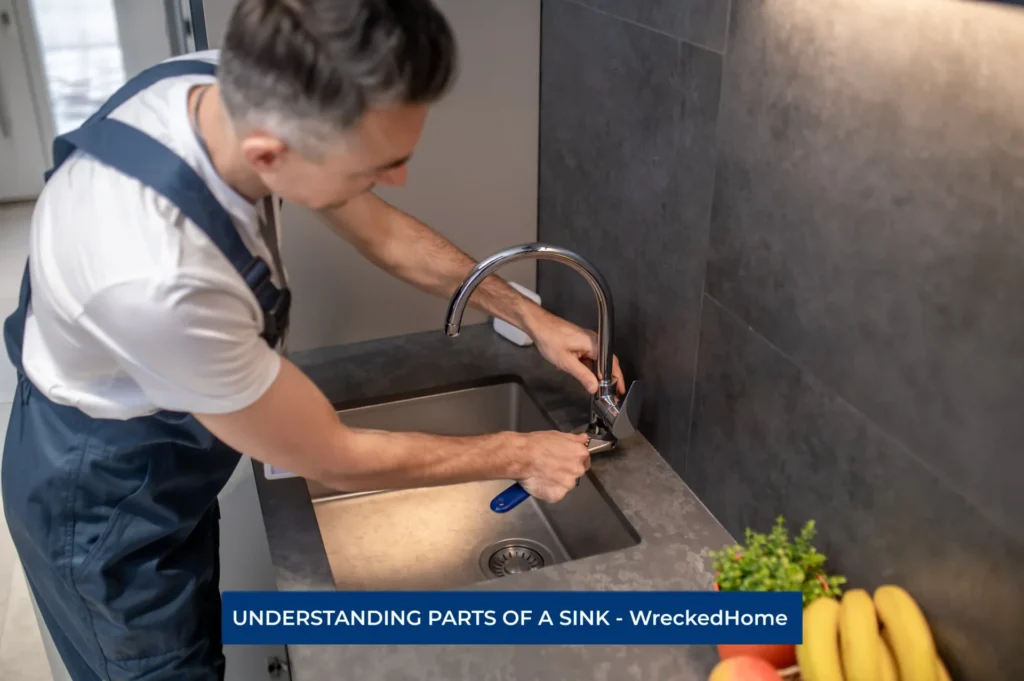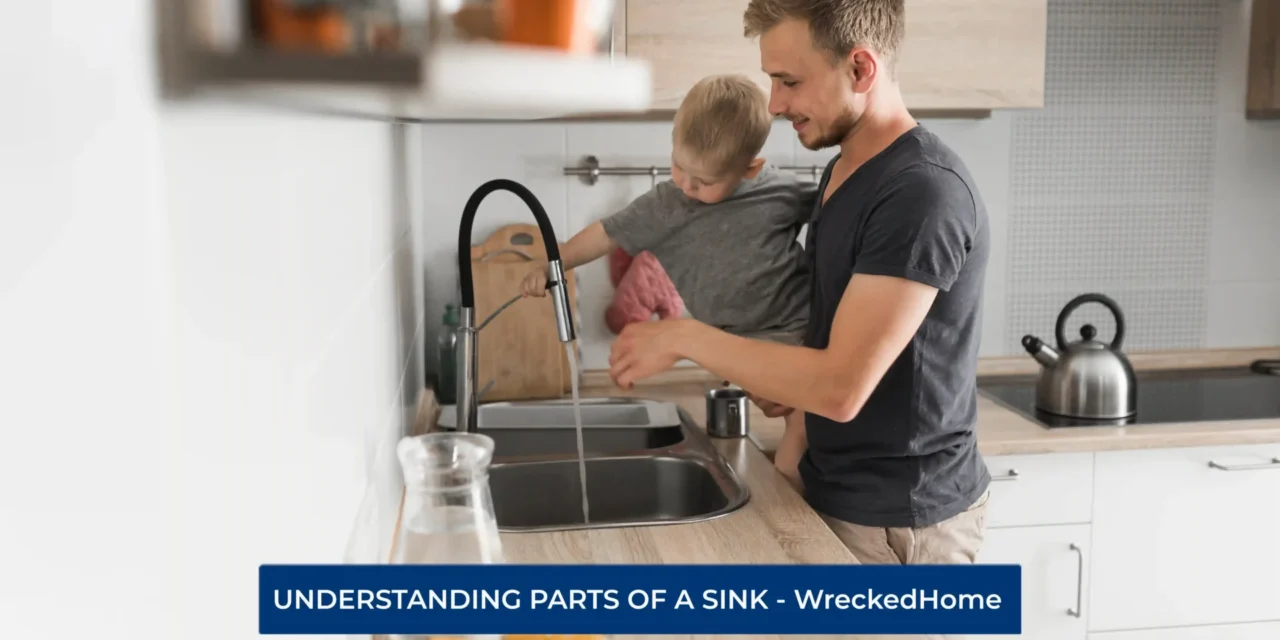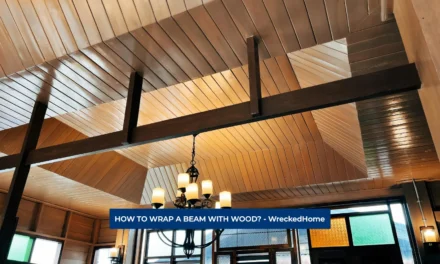The sink plays an indispensable role as your kitchen companion. It is a highly useful plumbing component in all homes, and serves as a central hubs in our homes. It is especially important in kitchens and bathrooms. With this Guide to Understanding the Parts of a Sink, you will learn the whole mechanism. You will also learn the functionality and ease in fixing plumbing issues.
Whether you’re a seasoned home chef or just navigating the waters of domesticity, delve into the anatomy of a sink. This guide will elucidate its components and their roles. From the functional elegance of the faucet to the unseen mechanisms; empower your home space by demystifying the kitchen sink. With sufficient knowledge you will save time, money, and prevent the frustrations of unexpected plumbing issues.
Understanding the Parts of a Sink: A Comprehensive Breakdown
If you are a home owner or want to use your kitchen appropriately, then you need to pay attention to your sink. This is basic and important one for your dish washing needs. Therefore, we breakdown the parts of a sink in following way
1. Basin:
The basin is often considered an integral element designed for holding water or other substances. Its primary function is to contain water while caters to diverse tasks such as washing, rinsing, and soaking. Basins come in different type of materials, each with its own set of benefits.
- Stainless steel basins are commonly known for its durability and ease of cleaning.
- Porcelain basins, frequently found in bathrooms, exude a timeless aesthetic by giving a sleek and classic appearance.
- Granite basins, on the other hand, elevate kitchen designs with a touch of sophistication by providing a robust and heat-resistant option.
In terms of shape and size, there’s a basin compatible to your space and function. These range from an expansive rectangular kitchen basin to the elegance of circular and oval bathroom vessels.
2. Faucet (Tap):
The faucet is an indispensable component of any sink. It orchestrates the controlled release of water into the basin. Faucets also come in various designs options, each tailored to specific needs and preferences. This creates a symphony of choices. The single-handle faucet offers simplicity that allows you to adjust water temperature and flow with a single hand. It is hassle free.
On the other hand, double-handle faucets provide separate controls for hot and cold water with its nuanced approach. Pull-out faucets feature a spout that can be extended. They offer greater flexibility and are particularly advantageous in bustling kitchens.
While choosing a faucet, there’s often delicate equilibrium between aesthetics and practicality. Some may opt for sleek, minimalist designs. They are also compatible with modern interiors because others prioritize features that linked with water-saving technology or ergonomic handles. Regardless of choice, the right faucet marries both style and practicality with seamless functionality.
3. Handles: Parts of a Sink
Handles are important parts of a Sink. They play a pivotal role in controlling both the water flow and its temperature. By turning or adjusting them, users can regulate the volume and warmth of the water that ease users.
These crucial components come in a variety of materials that includes stainless steel and brass. They also come with with different designs ranging from lever-style to cross and knob shapes. Lever handles give an easy experience with a simple up or down motion. As compared to cross handles that have a vintage appeal.
Knob handles are classic and can be turned clockwise or counter-clockwise to set according to usage. When selecting handles, it’s important to pay attention to durability. You must choose anti-corrosion materials and ensure the mechanism operates smoothly. After all, durable handles not only ensure longevity but also the sustained reliability of smooth, responsive mechanisms over time.
4. Spout: Parts of a Sink
The spout serves as the sink’s channel. They gracefully direct water from the faucet to the basin. These seemingly simple spouts come in a variety of designs. They are diverse in functionality and are tailored to both aesthetic preferences and practical needs.
The goose neck design, with its high arc, gives an ample space underneath. They look ideal for washing large pots in kitchens. Standard spouts are common and versatile. They nestle close to the basin and are suitable for general purposes and daily usage.
The pull-down variant, equipped with a retractable hose, transform the sink into a dynamic workspace where water follows the user’s lead. When selecting a spout, its reach and height are important things to consider.
Ensuring the spout extends sufficiently over the basin prevents splashes, while its height should be enough that ease sink’s intended tasks. A meticulously chosen spout ensures efficiency while impacting the sink’s overall design.
5. Drain and Strainer:

Visit our store for 10% off our Cleaning Products here.
The drain and strainer duo serve as the gateway to the watery world’s exit strategy. The drain allows water to flow out, while the strainer collects the large particles, and prevent from potential blockages. It comes in materials like stainless steel, brass, and plastic, along with variety of designs to match sink aesthetics.
From these, the pop-up drains are common in bathroom sinks; on the other hand basket strainers are common in kitchens. To avoid any blockage regular cleaning and maintenance necessary of both the drain and strainer are paramount.
Over time, debris accumulates that threatening and lead to slow drainage or clogs to slow water flow. By routinely clearing out trapped particles from the strainer and periodic drain TLC ensures not only uninterrupted water flow but also increase the life of your sink.
6. Garbage Disposal Unit:
In many modern kitchens, there is a garbage disposal unit stands as a vital addition to the sink system seamlessly tackling the challenge of food waste. Its primary function is to ease in safe and fast drainage that done by grind food waste into tiny particles.
To use it efficiently, always run cold water while the unit operates, and must avoide to dispose hard materials like bones or corn that can make disposal tough. Safety is paramount: never insert hands into the unit, use proper instruments and gloves for maintenance.
Like all appliances, the garbage disposal requires regular care and check out. You can use mild detergents or natural solutions like baking soda and vinegar that resist blockage and odor. Common issues include jams and dull blades; addressing these promptly ensures longevity and sustained peak performance.
7. P-Trap:
The P-Trap is a distinctively curved section of a sink’s drainage system, that is easy to identify by its U or J shape curvature. This design isn’t just for aesthetics; but it also useful for tapping water after sink use, forming a seal.
This water barrier effectively prevents unpleasant sewer gases from rising up and ensure safe on regular upkeep. It is constructed from materials like PVC, brass, or stainless steel, the P-Trap’s longevity and durability based on regular maintenance.
To prevent blockages, you can ease your sink experience by routinely inspecting and clearing out debris. Additionally, if odors arise, you can handle it with a mixture of warm water and mild detergent or baking soda.
8. Supply Lines:

At the core of a sink’s functionality lies the indispensable network of supply lines serving as the conduits that deliver water from the main source to the faucet.
Typically, there are two distinct lines: one for hot water and another for cold to ensure distinctive functionality. These lines are differentiated not only by their function but often by color-coding or labeling, that require proper installation techniques.
From these lines cold and hot lines connects directly to the main water source and water heater respectively. To find any issue in supply line it’s important to know signs of leaks or disruptions. Any leaks or breaks can be worst and lead to water waste, damage, and costly repairs.
Final Words
Delving into the proper knowledge the Parts of a Sink is more than just academic knowledge. It is important for cost-effective home maintenance that guarantees a harmonious blend of functionality and hygiene.
By understanding each part and its function, homeowners can report and fix the minor issues and save money in the long run. For longevity and efficiency of sink consulting additional resources or professional help is important.
For any repairs, installations, builds, or questions; We recommend you to hire a professional. Find A Pro Near You Here!
FAQs
What is the drain assembly for a sink?
The drain assembly is a critical component that facilitates water to move out from the sink. This assembly bridges the gap between the sink and the P-trap, and ensures the smooth water flow. Central to this mechanism are a flange and a stopper that are connected to a drain tube.
Moving along the assembly, an integrated ball and rod mechanism allows the drain to either pop up or descend. This makes sure water’s drainage or retention in the sink.
What are the parts of a faucet called?
A faucet is a composite structure made up of different components, from which each contributing to its function. Aerators regulate water stream consistency, and flow restrictors manage the water flow rate.
Essential parts include cartridges, which control water flow and temperature, and stems, connecting handles to the valves.
Additionally, the faucet’s efficiency and seal integrity depend on the basic parts like washers, O-rings, and flanges. Externally, caps, index buttons, and handles are visible parts that allow users to adjust the faucet’s water output.
What is the difference between sink and basin?
Although both sinks and basins hold water, the primary distinction lies in the typical installation locations. Sinks predominantly find their place in kitchens or utility areas that use for dishwashing. Basins, however, are installed primarily in bathrooms or washrooms that assist in personal hygiene routines like washing hands or brushing teeth. Despite their varying locations, and functionality both structures share a core functionality of containing and draining water.





































